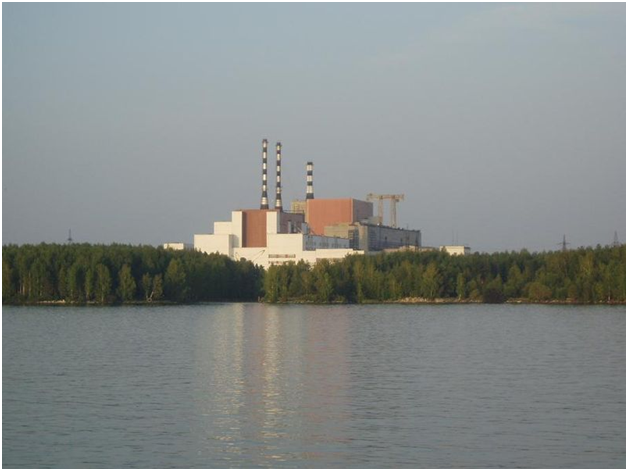My recent posts have been about breeder reactors which generate more fissile material than they consume. There is renewed global interest in breeder reactors for the production of nuclear fuel and the destruction of nuclear waste. Today's post is the second in a series about the history and current status of breeder reactors in the Soviet Union and Russia.
Before the BN-350 reactor began operations in 1972, the Soviets were working on a second fast neutron reactor with a higher power capacity. This reactor was called the BN-600 because it was intended to deliver six hundred megawatts. The Soviets wanted to use their experience with the BN-350 early operations to help refine their design for the BN-600. The BN-350 and the BN-600 reactors were seen as prototypes that would lead to commercial fast breeder power reactors.
The BN-600 was designed with a second sodium cooling system between the primary core cooling system and the steam generator. The heat exchangers, the piping, the coolant pumps and the reactor all sit in a pool of liquid sodium. The fuel mixture for the BN-600 was uranium enriched to about twenty percent. The common fuel enrichment in the regular Soviet reactors was about four percent. There is no separate containment vessel for the whole system. During construction and testing up to 1997, there were twenty seven sodium leaks with fourteen sodium fires. There was damage to the plant but no fatalities. The reactor was put into full operation in 1980 at the Beloyarsk Nuclear Power Station.
Design work on the next reactor in the series, the BN-800, began in 1983. It followed the designs for the BN-350 and BN-600 which had worked satisfactorily. After the Chernobyl disaster in 1987, the design for the BN-800 was completely revised. It was also revised extensively in the 1990s as standards for reactor design evolved. One major change between the BN-600 and the BN-800 had to do with the fuel mix. The BN-800 was going to burn natural uranium mixed with weapons grade plutonium from old warhead in a closed fuel cycle. They said that there was no intention to reprocess the fuel. The Soviet Union had planned to construct five BN-800s in the Urals. After the Chernobyl disaster in 1986, the Soviet nuclear program went into decline.
After the fall of the Soviet Union in 1991, the Russian economy was in serious trouble and could not afford to put money into new reactor construction. In addition, fast neutron reactors just could not compete economically with Russia's light water and thermal neutron reactors for power generation. There were discovery of new deposits of high grade uranium in the Soviet client states during the 1960s and the 1970s that also reduced the interest in the development of fast neutron breeder reactors to supply nuclear fuel. In the 1990s, the prospect for commercial fast neutron breeder reactors being built in Russia faded.
The Beloyarsk Nuclear Power Station:
